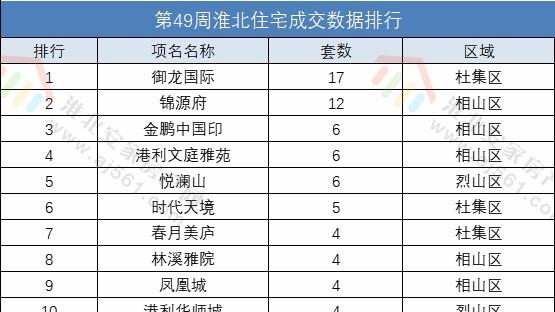#yydsе№Іиҙ§зӣҳзӮ№#Java ASMзі»еҲ—пјҲпјҲ093пјүеҸҚзј–иҜ‘-ж–№жі•еҸӮж•°пјү
еӯҰеҗ‘еӢӨдёӯеҫ—пјҢиҗӨзӘ—дёҮеҚ·д№ҰгҖӮиҝҷзҜҮж–Үз« дё»иҰҒи®Іиҝ°#yydsе№Іиҙ§зӣҳзӮ№#Java ASMзі»еҲ—пјҡпјҲ093пјүеҸҚзј–иҜ‘-ж–№жі•еҸӮж•°зӣёе…ізҡ„зҹҘиҜҶпјҢеёҢжңӣиғҪдёәдҪ жҸҗдҫӣеё®еҠ©гҖӮ
жң¬ж–ҮеұһдәҺJava ASMзі»еҲ—дёүпјҡTree APIеҪ“дёӯзҡ„дёҖзҜҮгҖӮ
1. еҰӮдҪ•еҸҚзј–иҜ‘ж–№жі•еҸӮж•°
1.1. жҸҗеҮәй—®йўҳ
жҲ‘们еңЁеӯҰд№ javaзҡ„иҝҮзЁӢдёӯпјҢеӨҡеӨҡе°‘е°‘йғҪдјҡз”ЁеҲ°Java Decompilerе·Ҙе…·пјҢе®ғеҸҜд»Ҙе°Ҷе…·дҪ“зҡ„.classж–Ү件иҪ¬жҚўжҲҗзӣёеә”зҡ„Javaд»Јз ҒгҖӮ
еҒҮеҰӮжңүдёҖдёӘHelloWorldзұ»пјҡ
public class HelloWorld {
public void test(int a, int b) {
int sum = Math.addExact(a, b);
int diff = Math.subtractExact(a, b);
int result = Math.multiplyExact(sum, diff);
System.out.println(result);
}
}дёҠйқўзҡ„
HelloWorld.javaз»ҸиҝҮзј–иҜ‘д№ӢеҗҺдјҡз”ҹжҲҗHelloWorld.classж–Ү件пјҢ然еҗҺеҸҜд»ҘжҹҘзңӢе…¶еҢ…еҗ«зҡ„instructionеҶ…е®№пјҡ$ javap -v sample.HelloWorld
Compiled from "HelloWorld.java"
public class sample.HelloWorld
{
...
public void test(int, int);
descriptor: (II)V
flags: ACC_PUBLIC
Code:
stack=2, locals=6, args_size=3
0: iload_1
1: iload_2
2: invokestatic#2// Method java/lang/Math.addExact:(II)I
5: istore_3
6: iload_1
7: iload_2
8: invokestatic#3// Method java/lang/Math.subtractExact:(II)I
11: istore4
13: iload_3
14: iload4
16: invokestatic#4// Method java/lang/Math.multiplyExact:(II)I
19: istore5
21: getstatic#5// Field java/lang/System.out:Ljava/io/PrintStream;
24: iload5
26: invokevirtual #6// Method java/io/PrintStream.println:(I)V
29: return
LocalVariableTable:
StartLengthSlotNameSignature
0300thisLsample/HelloWorld;
0301aI
0302bI
6243sumI
13174diffI
2195 resultI
}гҖҗ#yydsе№Іиҙ§зӣҳзӮ№#Java ASMзі»еҲ—пјҲпјҲ093пјүеҸҚзј–иҜ‘-ж–№жі•еҸӮж•°пјүгҖ‘йӮЈд№ҲпјҢжҲ‘们иғҪдёҚиғҪеҲ©з”ЁJava ASMеё®еҠ©жҲ‘们еҒҡдёҖдәӣеҸҚзј–иҜ‘зҡ„е·ҘдҪңе‘ўпјҹ
1.2. ж•ҙдҪ“жҖқи·Ҝ
жҲ‘们зҡ„ж•ҙдҪ“жҖқи·Ҝе°ұжҳҜпјҢз»“еҗҲ
SourceInterpreterзұ»е’ҢLocalVariableTableжқҘеҜ№invokeпјҲж–№жі•и°ғз”Ёпјүзӣёе…ізҡ„жҢҮд»ӨиҝӣиЎҢеҸҚзј–иҜ‘гҖӮдҪҝз”Ё
SourceInterpreterзұ»иҫ“еҮәFrameеҸҳеҢ–дҝЎжҒҜпјҡtest:(II)V
000:iload_1{[], [], [], [], [], []} | {}
001:iload_2{[], [], [], [], [], []} | {[iload_1]}
002:invokestatic Math.addExact{[], [], [], [], [], []} | {[iload_1], [iload_2]}
003:istore_3{[], [], [], [], [], []} | {[invokestatic Math.addExact]}
004:iload_1{[], [], [], [istore_3], [], []} | {}
005:iload_2{[], [], [], [istore_3], [], []} | {[iload_1]}
006:invokestatic Math.subtractExact{[], [], [], [istore_3], [], []} | {[iload_1], [iload_2]}
007:istore 4{[], [], [], [istore_3], [], []} | {[invokestatic Math.subtractExact]}
008:iload_3{[], [], [], [istore_3], [istore 4], []} | {}
009:iload 4{[], [], [], [istore_3], [istore 4], []} | {[iload_3]}
010:invokestatic Math.multiplyExact{[], [], [], [istore_3], [istore 4], []} | {[iload_3], [iload 4]}
011:istore 5{[], [], [], [istore_3], [istore 4], []} | {[invokestatic Math.multiplyExact]}
012:getstatic System.out{[], [], [], [istore_3], [istore 4], [istore 5]} | {}
013:iload 5{[], [], [], [istore_3], [istore 4], [istore 5]} | {[getstatic System.out]}
014:invokevirtual PrintStream.println{[], [], [], [istore_3], [istore 4], [istore 5]} | {[getstatic System.out], [iload 5]}
015:return{[], [], [], [istore_3], [istore 4], [istore 5]} | {}
================================================================2. зӨәдҫӢпјҡж–№жі•еҸӮж•°еҸҚзј–иҜ‘ 2.1. йў„жңҹзӣ®ж Ү
жҲ‘们жғіеҜ№
HelloWorld.classдёӯзҡ„testж–№жі•еҶ…зҡ„invokeзӣёе…ізҡ„instructionиҝӣиЎҢеҸҚзј–иҜ‘гҖӮpublic class HelloWorld {
public void test(int a, int b) {
int sum = Math.addExact(a, b);
int diff = Math.subtractExact(a, b);
int result = Math.multiplyExact(sum, diff);
System.out.println(result);
}
}йў„жңҹзӣ®ж Үпјҡе°Ҷж–№жі•и°ғз”Ёзҡ„еҸӮж•°иҝӣиЎҢеҸҚзј–иҜ‘гҖӮ
дҫӢеҰӮпјҢе°ҶдёӢйқўзҡ„instructionsеҸҚзј–иҜ‘жҲҗ
Math.addExact(a, b)гҖӮ0: iload_1
1: iload_2
2: invokestatic#2// Method java/lang/Math.addExact:(II)I2.2. зј–з Ғе®һзҺ°
import org.objectweb.asm.Type;
import org.objectweb.asm.tree.*;
import org.objectweb.asm.tree.analysis.*;
import java.util.ArrayList;
import java.util.List;
public class ReverseEngineerMethodArgumentsDiagnosis {
private static final String UNKNOWN_VARIABLE_NAME = "unknown";
public static void diagnose(String className, MethodNode mn) throws AnalyzerException {
// 第дёҖжӯҘпјҢиҺ·еҸ–FrameдҝЎжҒҜ
Analyzer<
SourceValue>
analyzer = new Analyzer<
>
(new SourceInterpreter());
Frame<
SourceValue>
[] frames = analyzer.analyze(className, mn);
// 第дәҢжӯҘпјҢиҺ·еҸ–LocalVariableTableдҝЎжҒҜ
List<
LocalVariableNode>
localVariables = mn.localVariables;
if (localVariables == null || localVariables.size() <
1) {
System.out.println("LocalVariableTable is Empty");
return;
}// 第дёүжӯҘпјҢиҺ·еҸ–instructionsпјҢ并жүҫеҲ°дёҺinvokeзӣёе…ізҡ„жҢҮд»Ө
InsnList instructions = mn.instructions;
int[] methodInsnArray = findMethodInvokes(instructions);
// 第еӣӣжӯҘпјҢеҜ№invokeзӣёе…ізҡ„жҢҮд»ӨиҝӣиЎҢеҸҚзј–иҜ‘
for (int methodInsn : methodInsnArray) {
// (1) иҺ·еҸ–ж–№жі•зҡ„еҸӮж•°
MethodInsnNode methodInsnNode = (MethodInsnNode) instructions.get(methodInsn);
Type methodType = Type.getMethodType(methodInsnNode.desc);
Type[] argumentTypes = methodType.getArgumentTypes();
int argNum = argumentTypes.length;
// (2) д»ҺFrameеҪ“дёӯиҺ·еҸ–жҢҮд»ӨпјҢ并е°ҶжҢҮд»ӨиҪ¬жҚўLocalVariableTableеҪ“дёӯзҡ„еҸҳйҮҸеҗҚ
Frame<
SourceValue>
f = frames[methodInsn];
int stackSize = f.getStackSize();
List<
String>
argList = new ArrayList<
>
();
for (int i = 0;
i <
argNum;
i++) {
int stackIndex = stackSize - argNum + i;
SourceValue stackValue = https://www.songbingjia.com/android/f.getStack(stackIndex);
AbstractInsnNode insn = stackValue.insns.iterator().next();
String argName = getMethodVariableName(insn, localVariables);
argList.add(argName);
}// (3) е°ҶеҸҚзј–иҜ‘зҡ„з»“жһңжү“еҚ°еҮәжқҘ
String line = String.format("%s.%s(%s)", methodInsnNode.owner, methodInsnNode.name, argList);
System.out.println(line);
}
}public static String getMethodVariableName(AbstractInsnNode insn, List<
LocalVariableNode>
localVariables) {
if (insn instanceof VarInsnNode) {
VarInsnNode varInsnNode = (VarInsnNode) insn;
int localIndex = varInsnNode.var;
for (LocalVariableNode node : localVariables) {
if (node.index == localIndex) {
return node.name;
}
}return String.format("locals[%d]", localIndex);
}
return UNKNOWN_VARIABLE_NAME;
}public static int[] findMethodInvokes(InsnList instructions) {
int size = instructions.size();
boolean[] methodArray = new boolean[size];
for (int i = 0;
i <
size;
i++) {
AbstractInsnNode node = instructions.get(i);
if (node instanceof MethodInsnNode) {
methodArray[i] = true;
}
}int count = 0;
for (boolean flag : methodArray) {
if (flag) {
count++;
}
}int[] array = new int[count];
int j = 0;
for (int i = 0;
i <
size;
i++) {
boolean flag = methodArray[i];
if (flag) {
array[j] = i;
j++;
}
}
return array;
}
}2.3. иҝӣиЎҢеҲҶжһҗ
еңЁ
HelloWorldAnalysisTreeзұ»еҪ“дёӯпјҢиҰҒжіЁж„ҸпјҡдёҚиғҪдҪҝз”ЁClassReader.SKIP_DEBUGпјҢеӣ дёәжҲ‘们иҰҒдҪҝз”ЁеҲ°MethodNode.localVariablesеӯ—ж®өзҡ„дҝЎжҒҜгҖӮpublic class HelloWorldAnalysisTree {
public static void main(String[] args) throws Exception {
String relative_path = "sample/HelloWorld.class";
String filepath = FileUtils.getFilePath(relative_path);
byte[] bytes = FileUtils.readBytes(filepath);
//пјҲ1пјүжһ„е»әClassReader
ClassReader cr = new ClassReader(bytes);
//пјҲ2пјүз”ҹжҲҗClassNode
int api = Opcodes.ASM9;
ClassNode cn = new ClassNode(api);
int parsingOptions = ClassReader.SKIP_FRAMES;
cr.accept(cn, parsingOptions);
//пјҲ3пјүиҝӣиЎҢеҲҶжһҗ
String className = cn.name;
List<
MethodNode>
methods = cn.methods;
MethodNode mn = methods.get(1);
ReverseEngineerMethodArgumentsDiagnosis.diagnose(className, mn);
}
}иҫ“еҮәз»“жһңпјҡ
java/lang/Math.addExact([a, b])
java/lang/Math.subtractExact([a, b])
java/lang/Math.multiplyExact([sum, diff])
java/io/PrintStream.println([result])3. жҖ»з»“жң¬ж–ҮеҶ…е®№жҖ»з»“еҰӮдёӢпјҡ
- 第дёҖзӮ№пјҢж•ҙдҪ“зҡ„жҖқи·ҜпјҢжҳҜеҲ©з”Ё
SourceInterpreterзұ»е’ҢLocalVariableTableжқҘе®һзҺ°зҡ„гҖӮ - 第дәҢзӮ№пјҢд»Јз ҒзӨәдҫӢгҖӮеҰӮдҪ•зј–з Ғе®һзҺ°еҜ№дәҺж–№жі•зҡ„еҸӮж•°иҝӣиЎҢеҸҚзј–иҜ‘гҖӮ
жҺЁиҚҗйҳ…иҜ»
- #yydsе№Іжҙ»зӣҳзӮ№#NginxжңҚеҠЎеҷЁзҡ„е®үиЈ…д»ҘеҸҠй…ҚзҪ®
- GitLab push еӨұиҙҘ,жҸҗзӨәrejected
- е…ідәҺ RocketMQClientID зӣёеҗҢеј•еҸ‘зҡ„ж¶ҲжҒҜе Ҷз§Ҝзҡ„й—®йўҳ
- #з§Ғи—ҸйЎ№зӣ®е®һж“ҚеҲҶдә«# дҪҝз”Ё JavaScript дёҠдј PDF е’Ң Excel зӯүдәҢиҝӣеҲ¶ж–Ү件еҲ° AB
- LINUXпјҲзЁӢеәҸе’ҢиҝӣзЁӢпјү
- Paper2018_еӨҡжңәеҷЁдәәйўҶиҲӘ-и·ҹйҡҸеһӢзј–йҳҹжҺ§еҲ¶
- Springжәҗз ҒдёүеҚғй—®д»Һжәҗз ҒеҲҶжһҗ@ResourceдёҺ@Autowiredзҡ„еҢәеҲ«
- OpenCVйҖҡйҒ“зҡ„еҲҶзҰ»е’ҢеҗҲ并
- #yydsе№Іиҙ§зӣҳзӮ№#Java ASMзі»еҲ—пјҲпјҲ091пјүеҶ—дҪҷеҸҳйҮҸеҲҶжһҗпјү











